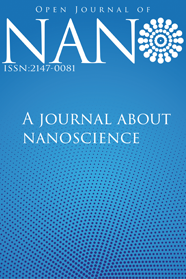Alternatif Karışım Yöntemleri ile F tipi Uçucu Külünün Çimento Harcı İçerisinde Kullanımı
Bu çalışmada, endüstriyel atıklardan birisi olan uçucu külün çimento harcı içerisindeki çimento ve ince agreganın kısmi ikamesi olarak kullanılmasına odaklanılmıştır. Betonda çimento ve ince agregalara alternatif olarak uçucu kül kullanımının uygulanabilirliği, kompozitlerde dayanım ve dayanıklılık özelliklerine etkisinin incelenmesi ile belirlenmiştir. Uçucu kül, karışımlar içerisinde üç farklı karışım yöntemi ile kullanılmıştır. Bunlar; basit ikame yöntemi, ilave yöntemi ve kısmi ikame yöntemidir. Her bir yöntemde %10, %20 ve %30 oranında ağırlıkça malzeme çıkarılmış, yerine uçucu kül eklenerek toplam on farklı karışım hazırlanmıştır. Karışımların taze ve sertleşmiş haldeki özelliklerinin belirlenmesine yönelik yapılan deneyler neticesinde, uçucu külün karışımlara eklenmesi işlenebilirliği ve donma-çözülme direncini iyileştirmiştir, su emme ve kılcal su emme oranı değerleri ise uçucu kül içeriğinin artmasıyla ilk günlerde artış göstermiş fakat ilerleyen yaşlarda azalmıştır. Çalışmada kullanılan yöntemler açısından sonuçlara bakıldığında basınç, su emme ve kılcal su emme deneylerinde ilave yönteminin, diğer yöntemlere göre daha iyi sonuçlar verdiği görülmüş, eğilme ve silindir yarma deney sonuçlarına göre ise, kısmi ikame yöntemi ile hazırlanan karışımlarda diğer karıştırma yöntemlerine kıyasla daha yüksek değerler elde edilmiştir.
Anahtar Kelimeler:
Uçucu kül, basit ikame yöntemi, kısmi ikame yöntemi, ilave yöntemi, mekanik özellikler, donma-çözülme, geçirimlilik özellikleri
Use of F-type Fly Ash in Cement Mortar with Alternative Mixing Methods
In this study, it is focused on the use of fly ash, which is one of the industrial wastes, as a partial replacement of cement and fine aggregate in cement mortar. The feasibility of using fly ash as an alternative to cement and fine aggregates in concrete was determined by examining its effect on strength and durability properties in composites. Fly ash was used in the mixtures with three different mixing methods. This is the simple substitution method, addition method and partial substitution method. In each method, 10%, 20% and 30% of the material was removed by weight, and a total of ten different mixtures were prepared by adding fly ash instead. As a result of the experiments to determine the properties of the mixtures in the fresh and hardened state, the addition of fly ash to the mixtures improved the workability and freeze-thaw resistance. When we look at the results in terms of the methods used in the study, it was seen that the addition method gave better results in pressure, water absorption and capillary water absorption experiments than other methods, and according to the bending and cylinder splitting test results, higher values were obtained in the mixtures prepared with the partial substitution method compared to the other mixing methods.
Keywords:
Fly ash, simple substitution method, partial substitution method, addition method, mechanical properties, freeze-thaw, permeability properties,
___
- [1] A. K. Saha, "Effect of class F fly ash on the durability properties of concrete," Sustainable environment research, vol. 28, no. 1, pp. 25-31, 2018.
- [2] J. Rissanen, K. Ohenoja, P. Kinnunen, and M. Illikainen, "Partial replacement of portland-composite cement by fluidized bed combustion fly ash," Journal of Materials in Civil Engineering, vol. 29, no. 8, p. 04017061, 2017.
- [3] R. Siddique, "Performance characteristics of high-volume Class F fly ash concrete," Cement and Concrete Research, vol. 34, no. 3, pp. 487-493, 2004.
- [4] A. K. Saha and P. K. Sarker, "Sustainable use of ferronickel slag fine aggregate and fly ash in structural concrete: Mechanical properties and leaching study," Journal of Cleaner Production, vol. 162, pp. 438-448, 2017.
- [5] S. W. M. Supit and F. U. A. Shaikh, "Durability properties of high volume fly ash concrete containing nano-silica," Materials and structures, vol. 48, no. 8, pp. 2431-2445, 2015.
- [6] A. Mardani-Aghabaglou, Ö. Andiç-Çakir, and K. Ramyar, "Freeze–thaw resistance and transport properties of high-volume fly ash roller compacted concrete designed by maximum density method," Cement and Concrete Composites, vol. 37, pp. 259-266, 2013.
- [7] E. E. Berry and V. M. Malhotra, Fly ash in concrete. Energy, Mines and Resources Canada, CANMET, Ottawa, pp. 223-229., 1986.
- [8] V. Akyüncü, "F ve C tipi uçucu küllerin çimento ile ikame edilmesiyle üretilen betonların mekanik ve dayanıklılık özelliklerinin karşılaştırılarak incelenmesi," 2012.
- [9] A. C618, "Standard specification for coal fly ash and raw or calcined natural pozzolan for use in concrete," in American society for testing and materials, 2003: ASTM international West Conshohocken, PA, USA.
- [10] C. ASTM, "230, Standard specification for sample and testing fly ash or natural pozzolan for use as a mineral admixture in Portland cement," Annual Book of ASTM Standard, vol. 4, p. 172, 1997.
- [11] ASTMC39, "ASTM C39, Standard test method for compressive strength of cylindrical concrete specimens, American Society for Testing and Materials, West Conshohocken, Pa.," ed, 2012.
- [12] ASTM C293, Standard Test Method for Flexural Strength of Concrete (using simple beam with center-point loading), American Society for Testing and Materials, West Conshohocken, Pa, 1979.
- [13] ASTMC642-13, "ASTM C642-13, Standard test method for density, absorption, and voids in hardened concrete, American Society for Testing and Materials, West Conshohocken, Pa," 2013.
- [14] ASTM C1585-13,Standard Test Method for Measurement of Rate of Absorption of Water by Hydraulic-Cement Concretes, American Society for Testing and Materials, West Conshohocken, Pa, 2013.
- Yayın Aralığı: Yılda 2 Sayı
- Başlangıç: 2012
- Yayıncı: Mustafa CAN
Sayıdaki Diğer Makaleler
Alternatif Karışım Yöntemleri ile F tipi Uçucu Külünün Çimento Harcı İçerisinde Kullanımı
Synthesis and Photophysical Properties of Pyrene-BODIPY Functionalized Subphthalocyanine Dyad
Modification of PVDF Membranes Using Dopamine/Zinc Oxide for Lead Removal from Aqueous Media
